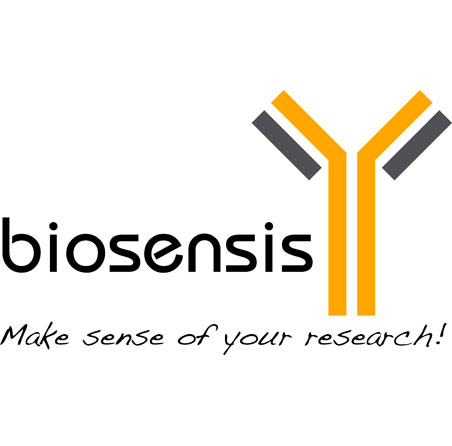Glial fibrillary acidic protein (GFAP), Mouse Monoclonal Antibody
As low as
US$427.00
Only %1 left
Catalog Number
M-981
- Product Name Glial fibrillary acidic protein (GFAP), Mouse Monoclonal Antibody
- Product Description Mouse anti-Glial fibrillary acidic protein (GFAP) Monoclonal Antibody (Unconjugated), suitable for WB, IHC-Frozen, IHC-Paraffin-embedded.
- Alternative Names Astrocyte; Glial fibrillary acidic protein;
- Application(s) IHC-Frozen, IHC-Paraffin-embedded, WB
- Antibody Host Mouse
- Antibody Type Monoclonal
- Specificity The specificity of this antibody has been confirmed by WB and IHC against the antigen. Human; mouse; rat;
- Species Reactivity Human, Mouse, Pig, Rat
- Immunogen Description GFAP from pig spinal cord
- Conjugate Unconjugated
- Purity Description IgG
- Regulatory Status For research use only.
Product Info
- Product Description Mouse anti-Glial fibrillary acidic protein (GFAP) Monoclonal Antibody (Unconjugated), suitable for WB, IHC-Frozen, IHC-Paraffin-embedded.
- Application(s) IHC-Frozen, IHC-Paraffin-embedded, WB
- Application Details Immunohistochemistry (IHC) and Western Blotting (WB). A concentration of 0.5-1.0 µg/mL is recommended for WB. Human GFAP has a predicted length of 432 residues and MW of 50 kDa. A concentration of 0.5-1.0 µg/mL is recommended to detect GFAP in formalin fixed and paraffin embedded tissues as well as formalin/acetone fixed tissues. Biosensis recommends optimal dilutions/concentrations should be determined by the end user.
- Target Glial fibrillary acidic protein (GFAP)
- Specificity The specificity of this antibody has been confirmed by WB and IHC against the antigen. Human; mouse; rat;
- Target Host Species Pig
- Species Reactivity Human, Mouse, Pig, Rat
- Antibody Host Mouse
- Antibody Type Monoclonal
- Antibody Isotype IgG
- Clone Name GA-8
- Conjugate Unconjugated
- Immunogen Description GFAP from pig spinal cord
- Purity Description IgG
- Format Lyophilized from 1.2% sodium acetate, 2 mg BSA, 0.01 mg NaN3
- Reconstitution Instructions Spin vial briefly before opening. Reconstitute in 1 mL of sterile-filtered PBS (pH 7.4) to achieve an antibody concentration of 100 µg/mL. Centrifuge to remove any insoluble material.
- Storage Instructions At least 12 months after purchase at 2-8°C (lyophilized formulations). After reconstitution, aliquot and store at -20°C for a higher stability. Avoid freeze-thaw cycles.
- Batch Number Please see item label.
- Expiration Date 12 months after date of receipt (unopened vial).
- Alternative Names Astrocyte; Glial fibrillary acidic protein;
- Uniprot Number Q8WP16
- Uniprot Number/Name Q8WP16 (Q8WP16_PIG)
- Scientific Background GFAP is a 50 kDa intra-cytoplasmic filamentous protein of the cytoskeleton in astrocytes. During the development of the central nervous system, it is a cell-specific marker that distinguishes astrocytes from other glial cells. GFAP immunoreactivity has been shown in immature oligodendrocytes, epiglottic cartilage, pituicytes, papillary meningiomas, myoepithelial cells of the breast and in non-CNS: Schwann cells, salivary gland neoplasms, enteric glia cells, and metastasizing renal carcinomas. At least 3 isoforms are produced from alternate splicing. These isoforms differ in the C-terminal region which is encoded by alternative exons. This antibody detects all three isoforms.
- Shipping Temperature 25°C (ambient)
- UNSPSC CODE 41116161
- Regulatory Status For research use only.
Specifications
-
General References
Reeves S.A, et al. Proc. Natl. Acad. Sci. U.S.A. 86:5178-5182(1989).
Brenner M, et al. Brain Res. Mol. Brain Res. 7:277-286(1990).
Isaacs A, et al. Genomics 51:152-154(1998).
Ota T, et al. Nat. Genet. 36:40-45(2004).
Nielsen A.L, et al. J. Biol. Chem. 277:29983-29991(2002).
Singh R, et al. Genomics 82:185-193(2003).
Brenner M, et al. Nat. Genet. 27:117-120(2001).
Brockmann K, et al. Eur. Neurol. 50:100-105(2003).
Stumpf E, et al. Arch. Neurol. 60:1307-1312(2003).
Sawaishi Y, et al. Neurology 58:1541-1543(2002).
Aoki Y, et al. Neurosci. Lett. 312:71-74(2001).

 1800 605-5127
1800 605-5127 +61 (0)8 8352 7711
+61 (0)8 8352 7711
